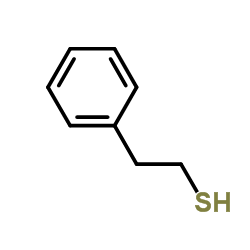Derivatization of phosphorylated peptides with S- and N-nucleophiles for enhanced ionization efficiency in matrix-assisted laser desorption/ionization mass spectrometry.
Clementine Klemm, Stephan Schröder, Matthias Glückmann, Michael Beyermann, Eberhard Krause
文献索引:Rapid Commun. Mass Spectrom. 18(22) , 2697-705, (2004)
全文:HTML全文
摘要
The identification of phosphorylation sites is essential for a full understanding of the cellular functions of proteins. However, mass spectrometric analysis is often hampered by the low abundance of phosphoproteins, the difficulty of obtaining full sequence coverage by specific proteolysis reactions, and the low ionization efficiency of phosphopeptides compared with their non-phosphorylated analogs. In the present work a beta-elimination/Michael addition was used to replace the phosphate groups of pSer or pThr by a group which gives rise to an enhanced ionization efficiency. In order to find optimum reaction conditions, beta-elimination/Michael addition was examined using phosphorylated model peptides. Whereas complete elimination of phosphate could be achieved by treatment with barium hydroxide in organic solvents such as ethanol or acetonitrile, the yield of the Michael adduct strongly depended on the nucleophile and the peptide sequence. Reaction with 2-phenylethanethiol, p-bromophenethylamine and ethylenediamine clearly resulted in products showing higher matrix-assisted laser desorption/ionization (MALDI) signal intensities compared with those of the corresponding phosphorylated precursors. The method was successfully used to identify phosphorylated sequences of ovalbumin and human Stat1 by in-gel derivatization with 2-phenylethanethiol and subsequent peptide mass fingerprint analysis of the trypsin digests.Copyright (c) 2004 John Wiley & Sons, Ltd.
相关化合物
| 结构式 | 名称/CAS号 | 分子式 | 全部文献 |
|---|---|---|---|
 |
2-苯乙硫醇
CAS:4410-99-5 |
C8H10S |
|
Surface modification-induced phase transformation of hexagon...
2015-01-01 [Nat. Commun. 6 , 6571, (2015)] |
|
One-phase controlled synthesis of Au25 nanospheres and nanor...
2015-08-28 [Nanoscale 7 , 13663-70, (2015)] |
|
Efficient red luminescence from organic-soluble Au₂₅ cluster...
2015-09-14 [Nanoscale 7 , 14305-15, (2015)] |
|
Biodegradation of malodorous thiols by a Brevibacillus sp. s...
2015-07-01 [FEMS Microbiol. Lett. 362 , (2015)] |
|
Structural isomerism in gold nanoparticles revealed by X-ray...
2015-01-01 [Nat. Commun. 6 , 8667, (2015)] |